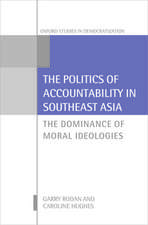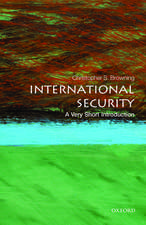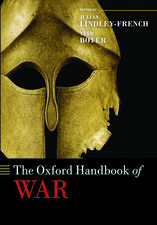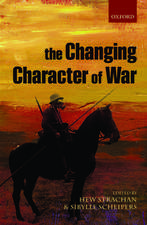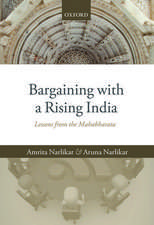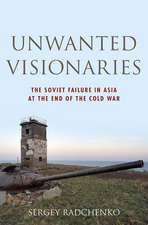Myth and Rhetoric of the Turkish Model: Exploring Developmental Alternatives
Autor Anita Senguptaen Limba Engleză Hardback – 15 mai 2014
| Toate formatele și edițiile | Preț | Express |
|---|---|---|
| Paperback (1) | 381.21 lei 6-8 săpt. | |
| Springer India – 3 sep 2016 | 381.21 lei 6-8 săpt. | |
| Hardback (1) | 385.84 lei 3-5 săpt. | |
| Springer India – 15 mai 2014 | 385.84 lei 3-5 săpt. |
Preț: 385.84 lei
Nou
Puncte Express: 579
Preț estimativ în valută:
73.83€ • 77.08$ • 61.10£
73.83€ • 77.08$ • 61.10£
Carte disponibilă
Livrare economică 14-28 martie
Preluare comenzi: 021 569.72.76
Specificații
ISBN-13: 9788132217640
ISBN-10: 8132217640
Pagini: 176
Ilustrații: X, 165 p. 2 illus., 1 illus. in color.
Dimensiuni: 155 x 235 x 17 mm
Greutate: 0.36 kg
Ediția:2014
Editura: Springer India
Colecția Springer
Locul publicării:New Delhi, India
ISBN-10: 8132217640
Pagini: 176
Ilustrații: X, 165 p. 2 illus., 1 illus. in color.
Dimensiuni: 155 x 235 x 17 mm
Greutate: 0.36 kg
Ediția:2014
Editura: Springer India
Colecția Springer
Locul publicării:New Delhi, India
Public țintă
ResearchCuprins
Preface.- Chapter 1. Political Dynamics in Eurasia: Background and Context of the Turkish Model.- Chapter 2. What is the “Turkish Model”?.- Chapter 3. Confronting the Past: Reclaiming Ottoman-Russian connections and the Ottoman legacy.- Chapter 4. Eurasianism or Neo-Ottomanism? The Neighborhood in Turkish Foreign Policy.- Chapter 5. The Central Asian Response to Models.- Chapter 6. The Turkish Model at Crossroads: A Conclusion.- Bibliography.
Notă biografică
Anita Sengupta is Fellow at the Maulana Abul Kalam Azad Institute of Asian Studies, Kolkata, an autonomous institute under the Ministry of Culture, Government of India. Her work at the Institute has been focused on the Eurasian region with Uzbekistan being her area of special interest. She has also worked extensively on Turkish politics. She is the author of Heartlands of Eurasia: The geopolitics of political space, (Lanham, Boulder, New York, Toronto, Oxford: Lexington Books July 2009); Russia, China and Multilateralism in Central Asia, (New Delhi: Shipra Publications, 2005); The Formation of the Uzbek Nation-State: A Study in Transition, (Lanham, Boulder, New York, Toronto, Oxford: Lexington Books, 2003) and Frontiers into Borders: The Transformation of Identities in Central Asia, (Delhi and London: Hope India Publications and Greenwich Millennium Press Ltd, 2002). She has also edited a number of volumes on Eurasian politics.Asian Studies and Central Asia and the Caucasus. Her articles have been translated and published in Russian and Chinese. She has been an invited speaker at various national and international seminars.
Textul de pe ultima copertă
The volume discusses what the Turkish Model, or Turkish Development Alternative, was and why it was promoted in the Central Asian republics immediately following the dissolution of the Soviet Union. It argues that the Turkish Model was a myth that transferred the ideal of a ''secular, democratic, liberal society'' as a model for the post Soviet Turkic world and in the process encouraged a ''Turkic" rhetoric that emphasized connection between the two regions based on a common ancestry. The volume begins with an understanding of the reality of the Model from a Turkish perspective and then goes on to examine whether the Turkic world as a "cultural-civilizational alternative" makes sense both from a historical as well as contemporary perspective. It concludes by looking at the re-emergence of the Model in the wake of the events in West Asia in early 2011 and examines how in the light of a search for options the Turkish Model is once again projected as viable.
Caracteristici
First volume to look at the ‘myth’ of the Turkish Model from a Eurasian and post-Arab Spring perspective Critically looks at various understandings of the Turkish Model Looks at the broader question of how far ‘models’ work for regions in transition Includes supplementary material: sn.pub/extras

